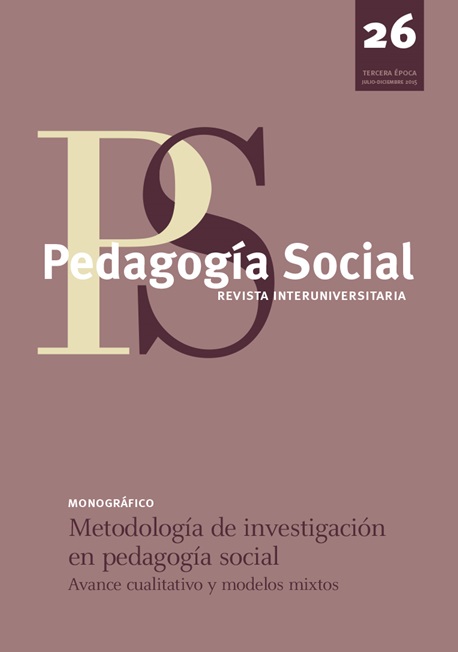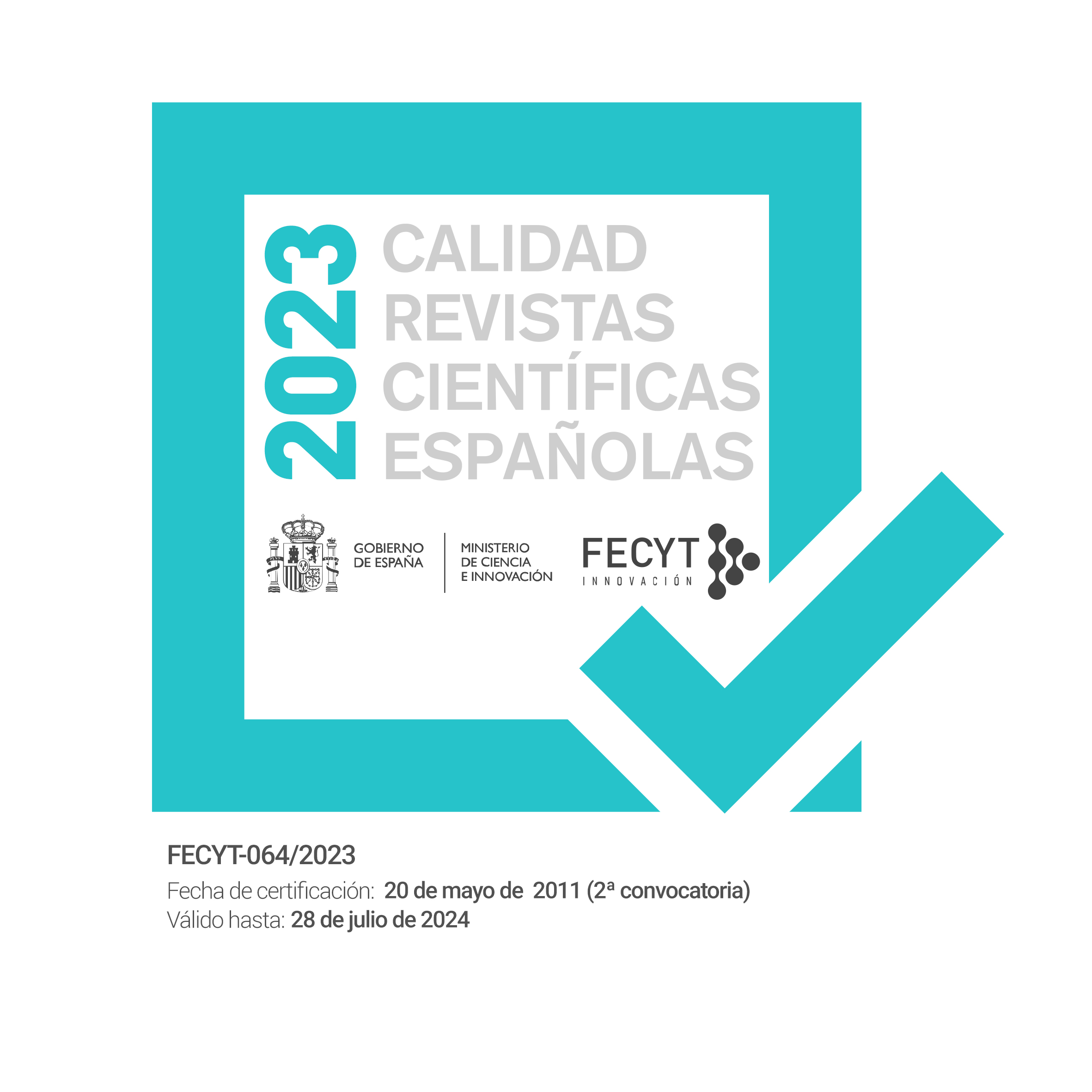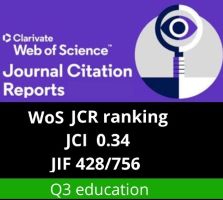Elder people and ICT. A commitment to bridging the digital divide
DOI:
https://doi.org/10.7179/PSRI_2015.26.13Keywords:
ICT, Elderly, Digital divide, Learning Methodology, Accessibility, Internet, Social motivationAbstract
With increasing life expectancy and growth of knowledge and information, ICT enable elderly people to increase and improve their individual and social development and optimize their quality of life from a technical, economic, political and cultural viewpoint.
The present study aims to analyze the use that elderly people make of ICT. The method used for the study is descriptive using the questionnaire
technique to verify the knowledge that elderly people have on ICT, interest, tools and difficulties of access.
Results show that elderly people consider poor their ICT skills, using them primarily to communicate with friends and family. Most of them can use the e-mail, can open, print and attach a file and use Internet search engines to find information, the lowest values are associated with spreadsheets, databases and statistical packages. They consider ICT as being useful to help building communication, developing integration, generating information among people and improving intergenerational relationship, gathering information not readily accessible by other means and learning new skills.
They have no fear when using them, consider attainable their learning and see many possibilities in its use and therefore worth spending time and effort but feel that society is too dependent on computers. In conclusion, we consider essential to improve access for elderly people to ICT as an important tool for improving their quality of life and there are no major difficulties for effective management.
Downloads
References
Agudo Prado, S., Sevillana, P., de los Ángeles, M., & Fombona Cadavieco, J. (2012). Usos de las herramientas digitales entre las personas mayores. Comunicar, 39, 193-201. doi: 10.3916/c39-2012-03-10
Barroso Osuna, J., Cabero Almenara, J., & Romero Tena, R. (2002). Las personas mayores y las nuevas tecnologías: una acción en la sociedad de la información. Innovación educativa, 12, 319-337.
Casanova, J. & Pavón, F. (2002). Las tecnologías de la información y la comunicación en el contexto de las aulas universitarias de mayores. Quaders Digitals, 21. Retrieved from www.quadersdigitals.net/datos_web/hemeroteca/r_1/nr_21/a_281/281.htm
Clarke, A. (1999). How To Create Effective Information and Communication Technology learning Programmes. A Guide. Leicester: National Institute of Adult Continuing Education.
Clarke, A. (2001). First steps: Initial Information and Communication Technology (ICT) Events. London: Department for Education and Employement.
Crossan, B., Martin, I., & Whittaker, S. (2001). Learning, Identity and Citizenship: Researching Older People's Use of ICT in Scotland. Paper presented at the European Society for research on the Education of Adults (ESREA). Education Research Conference “Wider Benefits of learning: Understanding and Monitoring the consequences of adult Learning” (pp. 106-111). Xátiva: ESREA.
Crowther, J., Hemmi, A., Martin, I., & Scandrett, E. (2008). Spaces of Hope. Adults Learning, 19(10), 16-19.
De-Juanas Oliva, Á., Mendizábal, L., Rosario, M., & Navarro Asencio, E. (2013). Análisis del bienestar psicológico, estado de salud percibido y calidad de vida en personas adultas mayores. Pedagogía Social: Revista Interuniversitaria, 22, 153-168. doi: http://dx.doi.org/10.7179/PSRI_2013.22.11
Eggermont, S., Vandebosch, H., & Steyaert, S. (2006). Towards the desired future of the elderly and ICT: policy recommendations based on a dialogue with senior citizens. Poiesis & Praxis: International Journal of Technology Assessment and Ethics of Science, 4(3), 199-217. doi:10.1007/s10202-005-0017-9.
Friemel, T.N. (2014). The digital divide has grown old: Determinants of a digital divide among seniors. New Media & Society, 16 (1), 176-183. doi: 10.1177/1461444814538648
García Mínguez, J., & Sánchez García, A. (1998). Un modelo de educación en los mayores: la interactividad. Madrid: Dykinson.
Gómez del Castillo, M.T. (2003). La formación de personas mayores en nuevas tecnologías. Quaderns Digitals, 29, 1-10.
Guirao, M., & Sánchez Martínez, M. (1999). Sobre los mayores universitarios. Pedagogía social: revista interuniversitaria, 3, 191-200.
Huber, J. T., Walsh, T. J., & Varman, B. (2005). Camp For All Connection: a community health information outreach project. Journal of the Medical Library Association, 93(3), 348-352.
Kiel, J. (2005). The digital divide: Internet and e-mail use by the elderly. Medical Informatics & the Internet in Medicine, 30, 9-23. doi: 10.1080/14639230500066900
Limón, M.R. & Ortega, M.C. (2011). Envejecimiento activo y mejora de la calidad de vida en adultos mayores. Revista de Psicología y Educación, 1(6), 225-238.
Magnusson, L.; Hanson, E. & Borg, M. A. (2004). Literature Review Study of Information and Communication Technology as a Support for Frail Older People Living at Home and their Family Carers. Technology & Disability, 16, 223-35.
Mann, WC. (2005). Computer accessibility issues for older adults with disabilities: A pilot study. OTJR: Occupation, Participation and Health, 25(2), 55-65. doi:10.1177/153944920502500203
Millán-Calenti, J. C., Aguiar, L., Pernas, M. P., Rodríguez-Malmierca, M. J., Orive, P., & García-Tobio, J. (2003). Los mayores y las nuevas tecnologías de la comunicación. Rev Mult Gerontol, 13(1), 37-42.
Millward, P. (2003). The'grey digital divide': Perception, exclusion and barriers of access to the Internet for older people. First Monday, 8(7). doi:10.5210/fm.v8i7.1066. Retrieved from http://firstmonday.org/issues/issue8_7/millward/index.html
Moreno, M. D. (2008). Alfabetización digital: el pleno dominio del lápiz y el ratón. Comunicar, 30, 137-146.doi:10.391/c30-2008-02-007
Nimrod, G. (2009). The Internet as a resource in older adults´ leisure. International Journal of Disability and Human Development, 8(3), 207-214. doi: 10.1515/IJDHD.2009.8.3.207
Nimrod, G. (2010). Seniors´online communities: A quantitative content analysis. The Gerontologist, 50(3), 382-392. doi: 10.1093/geront/gnp141
Norris, P. (2001). Digital divide: Civic engagement, information poverty, and the Internet worldwide. Cambridge University Press.
Pavón Rabasco, F. (2000). Tecnologías avanzadas: nuevos retos de comunicación para los mayores. Comunicar, 15, 133-139.
Pavón, F. (2000). Educación de adultos y de personas mayores con nuevas tecnologías. En Marchena, E. & Alcalde, C. (Coords) La perspectiva de la Educación en el siglo que empieza. Actas del IX Congreso INFAD (pp. 470-475). Cádiz: Servicio de publicaciones de la Universidad de Cádiz.
Pavón, F. (2002). Las nuevas tecnologías y la informática al alcance de todos. Comunicación y Pedagogía, 183, 28-39.
Pavón, F., & Castellanos, A. (2000). Aprendizaje de las personas mayores y nuevas tecnologías. En Valenzuela, E. & Alcalá, E. (Eds.). El Aprendizaje de las Personas Mayores ante los retos del nuevo milenio (pp. 197-236). Madrid: Dykinson.
Pazos, A.; Montes, C.; Barreiro, J. M. & Santos A. (1997). Nuevas tecnologías y computación avanzada en la ayuda a discapacitados. Santiago de Compostela: Fundación Alfredo Brañas.
Pereira, C., & Neves, R. (2011). O contributo das TIC para a Qualidade de Vida de pessoas idosas. Revista DIM: Didáctica, Innovación y Multimedia, (20), 1-8. Retrieved from http://dim.pangea.org/revistaDIM20/docs/dim20claudiapereiraocontributodastic.pdf
Rabasco, F. P. (2000). Internet para mayores. Comunicación y pedagogía: Nuevas tecnologías y recursos didácticos, (165), 62-69.
Selwyn, N. (1997). Students' attitudes toward computers: Validation of a computer attitude scale for 16–19 education. Computers & Education, 28(1), 35-41.
Selwyn, N. (2004). The information aged: A qualitative study of older adults' use of information and communications technology. Journal of Aging Studies, 18(4), 369-384. doi:10.1016/j.jaging.2004.06.008
Selwyn, N., & Gorard, S. (2008). What Computers Can't Do for You. Adults Learning, 19(6), 26-27.
Torp, S., Hanson, E., Hauge, S., Ulstein, I., & Magnusson, L. (2008). A pilot study of how information and communication technology may contribute to health promotion among elderly spousal carers in Norway. Health & social care in the community, 16(1), 75-85. doi: 10.1111/j.1365-2524.2007.00725.x
Trentin, G. (2004). E‐learning and the third age. Journal of Computer Assisted Learning, 20(1), 21-30. doi: 10.1111/j.1365-2729.2004.00061.x.
Villar, F. (2003). Personas mayores y ordenadores: valoración de una experiencia de formación. Revista Española de Geriatría y Gerontología, 38(2), 86-94. doi: 10.1016/S0211-139X(03)74862-8
White, H., McConnell, E., Clipp, E., Branch, L. G., Sloane, R., Pieper, C., & Box, T. L. (2002). A randomized controlled trial of the psychosocial impact of providing internet training and access to older adults. Aging & mental health, 6(3), 213-221. doi:10.1080/13607860220142422
Downloads
Published
Issue
Section
License
Copyright (c) 2015 Pedagogia Social. Revista Interuniversitaria

This work is licensed under a Creative Commons Attribution-NonCommercial 3.0 Unported License.
Copyright and right to archive
The published version of the articles can be self-archived by their authors in open access institutional and thematic repositories. However, Pedagogía Social. Revista Interuniversitaria must authorize partial or global reutilisation on new papers or publications.
Published papers must be cited including the title of the journal Pedagogía Social. Revista Interuniversitaria, issue, pages and year of publication
Ethical responsibilities
Pedagogía Social. Revista Interuniversitaria does not accept any material that has been previously published in other documents or publications. Authors are responsible for obtaining the required permissions for partial or global reproduction any material from other publications, and to correctly quote its origin.
Pedagogía Social. Revista Interuniversitaria is obliged to detect and report fraudulent practices.
Only those who have intellectually contribute to the development of the paper must appear as authors.
The journal expects authors to declare any commercial partnership that might entail a conflict of interest with respect to the submitted article.
Authors must mention in the article, preferably in the “methodology” section, that the procedures used during the samplings and controls have been made after getting informed consent.
The journal will not use any received contribution in a way other than the goals described in these guidelines.
Copyright Notice
© Pedagogía Social. Revista Interuniversitaria. Papers published in both the printed and online versions of this Journal are property of Pedagogia Social. Revista Interuniversitaria, being required to cite the source in any partial or total reproduction.
Unless otherwise stated, all content of this electronic journal is distributed under "Creative Commons Attribution-Non commercial 3.0 Spain" (CC-by-nc) license for use and distribution. The informative version and the legal text of this license is available here. This has to be expressly stated in this way when necessary.





